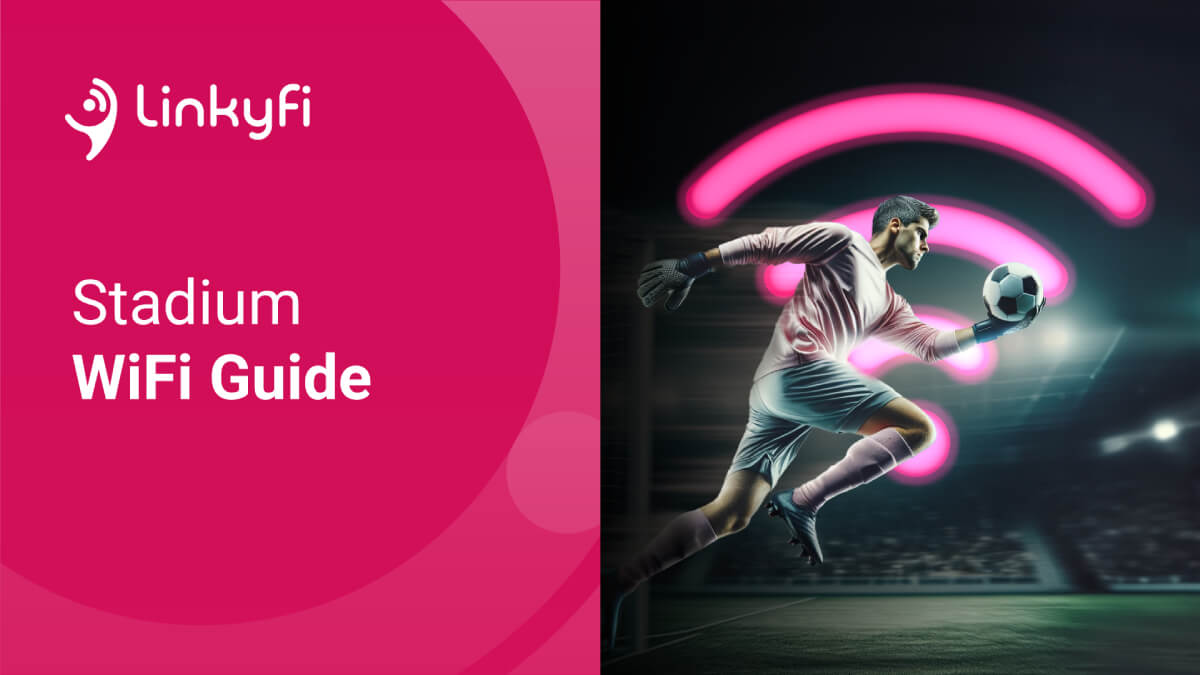How WiFi Location Analytics Influence Business Efficiency

Today, WiFi is more than just a free tool to attract customers.
It’s sophisticated.
It’s capable of providing location analytics to organisations, giving the kind of insights that can have a positive impact on your bottom line. And these insights aren’t limited to just the retail market. Hospitality, healthcare and government have the chance to develop stronger operational structures.
What kinds of gains are we talking?
Think better people planning, smarter and more effective product placement, strategic and highly targeted marketing campaigns, and optimised workplace design.
What could your organisation do with just one of those benefits?
But not everyone experiences these gains. Most organisations are still tethered to legacy WiFi solutions. So, before we dive into the gems WiFi location analytics provides, we need to set the right foundation. It’s worth sharing how legacy WiFi works and the limitations thereof.
Free WiFi matters
WiFi, when introduced into public spaces, was largely a carrot for passersby. In fact, when you think of WiFi in a public domain, there’s a good chance that internet connectivity at a coffee shop comes to mind.
The idea was, and to a large degree in many legacy WiFi applications still is, to offer free WiFi in the hopes that customers will spend more time and money at an establishment. And free WiFi is expected by visitors today. It’s become part of the quintessential customer experience.
The challenge? Proving ROI is really difficult for legacy WiFi networks. They’re just not built to track and provide the insights you need.
They don’t include sophisticated apps and APIs. They also don’t offer data visualisation functionality either. This makes uncovering patterns that form at your location almost impossible.
Bottom line: Without insightful data, you can’t make the changes you need to move your business forward.
A new approach to WiFi
WiFi location analytics is a gamechanger. Using smart apps and API integrations, existing and legacy WiFi networks can become elevated.
Here’s a breakdown of the kind of functionality that you’ll experience, along with examples for context:
Uncover dwell time

Dwell time is a relatively simple concept to understand. It’s the amount of time people spend at a specific position at your location. While pretty straightforward, it’s a powerful data point. Coupling dwell time with demographic data allows you to learn more about who spends time in specific spots at your location.
For example, if you’re responsible for merchandising in a busy men's retail outlet, dwell time could be the difference between more sales and upsells, and fewer transactions.
How? When your buyers experience your store, smart WiFi apps capture anonymous data from every WiFi-enabled smartphone. These apps also generate heat maps that clearly indicate your store’s hot spots. As buyers spend time in various areas of your retail outlet, more data is gathered.
You’ll be able to determine how long certain demographics spend in various sections of your store. To use this data to drive more sales and upsells, you could position stock that pairs well together, or have staff on-hand to answer questions from buyers, accelerating sales.
Discover new and return visitors
How many users have returned in the last week and month to your venue? Tough question if you’re not able to pull on any data.
Establishing the number of visitors that are new and those that are returning is relatively easy using WiFi analytics. As visitors spend time at your location, you’re able to pair data that shows new and return visitors with demographic data.

If you’re the manager of a busy hotel, you want to ensure that the service is always perfect, and also maximise on opportunities to increase guest spend. Using data about new visitors and those who are returning can help you determine where your visitors spend time in your hotel.
For example, imagine learning that you have received more new customers this month than in the last? And as it turns out, new customers all seem to spend more time in conference rooms, your pool area and tend to stay over for 2 days on average.
How could you capitalise on this data?
With WiFi location analytics you could offer complementary services. Guests attending a conference could do with a little pampering. Offering a spa treatment at the end of their stay would leave them refreshed and ready to return to their regular schedules.
Spot traffic patterns and flow
Traffic patterns show which areas of a location receive the most foot traffic. While you may think that this level of insight only benefits retailers, hospitals can use it to create more optimised workspaces.

Hospital visits are typically associated with urgent treatment or care requirements. But as hospitals experience an influx of patients, care often suffers. Patients aren’t sure where to go, and staff often scramble to offer care.
As patients arrive at your hospital, you’ll be able to use WiFi location analytics to track traffic patterns. For instance, you can tell where patients spend the most time and which departments get the most admissions.
How can you use traffic patterns and flow to optimise your hospital?
As patterns develop, you can use this data to pinpoint areas in your hospital that show high traffic volumes. Coupled with dwell time, you’ll be able to identify where patients spend the most time and assign staff to help ease the flow. This approach will lead to a more optimised and enhanced patient care experiences.
Learn what your peak traffic hours really are
Being able to determine when your location is busiest through WiFi location analytics can influence your bottom line. From the number of staff you have available on your busiest days, to tweaks to internal processes to streamline how you serve visitors.

Consider, government buildings. Often, internal restructuring can lead to relocations for staff. Visiting staff also present more traffic. As staff move from one building to another, the need to access secure and reliable WiFi is crucial. With it, staff need only visit a site and can be automatically logged onto WiFi.
Beyond the ease of access to secure WiFi, onsite IT and ops managers can better plan resources. This includes everything from the number of WiFi routers to the available workstations to accommodate traffic surges.
Gather web usage stats for targeted marketing
WiFi offers you the opportunity to learn more about your visitors. You’re able to discover age groups, genders and interests by tracking web usage.

Web usage stats can then be used to help you generate marketing ROI. Using a more complete picture of what appeals to visitors along with tailored marketing messaging will make it possible to better position your brand, products and services in front of your audience on websites they visit.
Location-based marketing (LBM) is also possible and can strengthen brand-client relationships. Research by Wireless Broadband Alliance shows that more than 50% of companies use it to target customers.
This makes for highly-targeted marketing campaigns that you can run to visitors whenever they are onsite.
Conclusion
WiFi isn’t a white elephant any longer, it’s become a cash cow thanks to WiFi location analytics. The introduction of apps and APIs designed to gather location analytics can position any organisation for bottom-line gains.
But you need to have the right solution to capitalize on data that is seemingly hidden at present.
Being able to uncover dwell time, identify new and return visitors, traffic patterns, peak hours and website usage stats can help you develop a clearer picture of how users engage your organisation.
Recommended posts
- WiFi for Stadiums Explained
- Guest WiFi - Easter Marketing with AI: A Step-by-Step Guide
- Guest WiFi + AI: Your Marketing Dream Team!
Subscribe to stay in the loop with all our latest content:
Recommended posts



